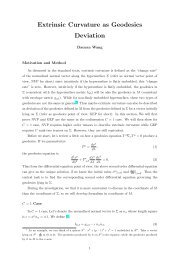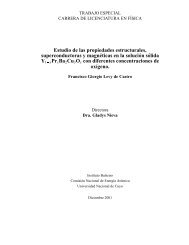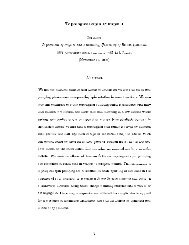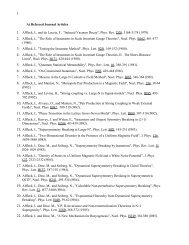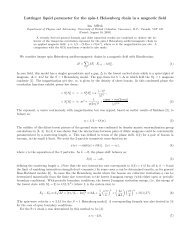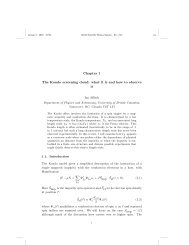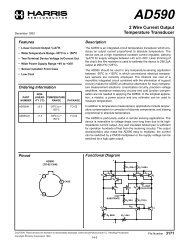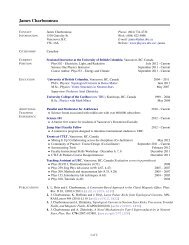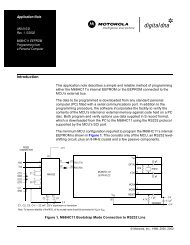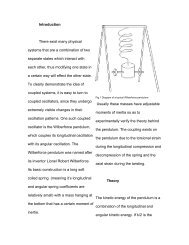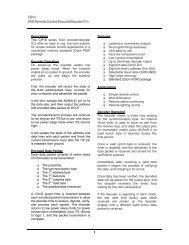Master thesis - UBC Physics & Astronomy
Master thesis - UBC Physics & Astronomy
Master thesis - UBC Physics & Astronomy
You also want an ePaper? Increase the reach of your titles
YUMPU automatically turns print PDFs into web optimized ePapers that Google loves.
32 M. Alexandersen : <strong>Master</strong> <strong>thesis</strong><br />
Fourier analysis successfully. The periodicity should repeat at least 10<br />
times over the data. If the dynamical image is binned with 10 time bins,<br />
that will, for good data as for GRB070524, leave just 50-150 counts per<br />
time interval. A large part of these are then in the background, and not<br />
in the actual expanding halo. So not very many counts are available for<br />
each peak.<br />
Furthermore, the halo fades as it expands. This would also be a problem<br />
for the Fourier analysis method, as the periodicity is not really periodic<br />
then.<br />
Last, but not least, the Swift data is full of holes. The size of the<br />
holes vary, but for most observation, more than half of every ∼ 5400 s<br />
orbit of the Swift satellite is unobservable, because the Earth blocks the<br />
view. These holes destroys the periodicity of the one dimensional data<br />
strip in that there are holes where there should have been a peak. One<br />
cannot simply ignore and leave out the time interval where there is no<br />
observation, because then there will not be a constant increase in θ 2 from<br />
one bin to the next 3 . The only way to get around this problem would be<br />
to use time intervals so large that there are always counts in every time<br />
interval. The Swift orbital period, 5400 s, would be good. This, however,<br />
limits the usefulness, as very few Swift GRB observations stretch much<br />
more than 3-5 orbits, and even good haloes as GRB050724 are faded<br />
significantly by then.<br />
Fig. 16 demonstrates well why even good Swift data, as GRB050724, is<br />
not suited for this method. The fading of the peaks is very large, and by<br />
the 5th time interval the peak cannot be seen. If the data in Fig. 16 was<br />
to be split to produce 10 peaks, most of the peaks would be vanishingly<br />
faint. Depending on where the intervals are put, and their size, some of<br />
the intervals would be empty or nearly empty, because of the unobserved<br />
periods.<br />
So, in the end, there are many reasons why this method cannot be<br />
used on Swift data. XMM data, such as the observation of GRB031203<br />
that revealed two expanding rings, have a much higher count rate, and<br />
3 Imagine the dynamical image in Fig. 23 without the holes. The expanding<br />
ring would not be a straight line. In the same way, the one dimensional data<br />
would not be periodic.



